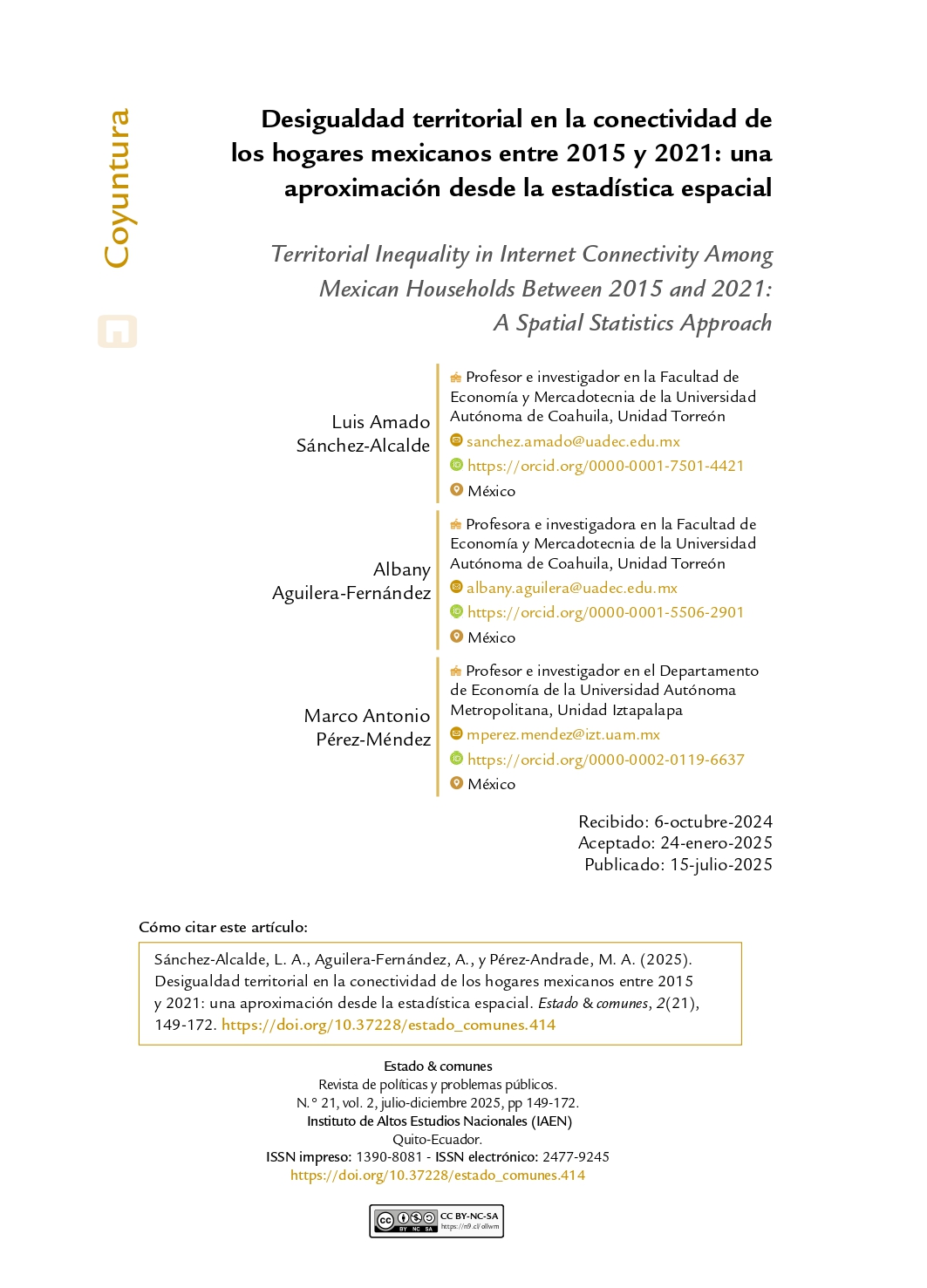Territorial Inequality in Internet Connectivity Among Mexican Households Between 2015 and 2021: A Spatial Statistics Approach
Main Article Content
Abstract
This article analyzes the behavior of internet connectivity in Mexican households between 2015 and 2021. Using descriptive and spatial statistics, the data show that inequality in internet access decreased and that average dispersion also declined, although gaps and asymmetries persist among the 32 federal entities. States with low connectivity—mainly located in the south—form a cluster, while those with high connectivity group into another cluster in the north. Both clusters spread spatially and spill over into the connectivity of neighboring states. These asymmetries between a predominantly connected north and a structurally lagging south highlight the urgent need for differentiated public policies with a spatial focus, supported by technical inputs that acknowledge the influence of the socioeconomic dynamics specific to each entity.
Downloads
Article Details
How to Cite
Issue
License
Copyright (c) 2025 Luis Amado Sánchez-Alcalde, Albany Aguilera-Fernández, Marco Antonio Pérez-Méndez
Author Biographies
Luis Amado Sánchez-Alcalde (Universidad Autónoma de Coahuila)
Professor and Researcher, Faculty of Economics and Marketing, Torreón Campus
Albany Aguilera-Fernández (Universidad Autónoma de Coahuila)
Professor and Researcher, Faculty of Economics and Marketing, Torreón Campus
Pérez-Méndez Pérez-Méndez (Metropolitan Autonomous University)
Professor and Researcher, Department of Economics, Iztapalapa Campus











